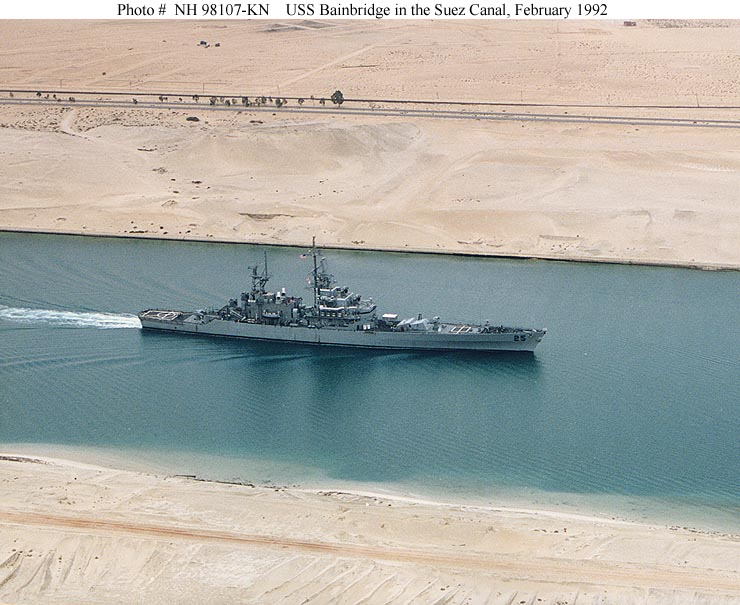
Welcome to MSW’s Scuttlebutt! Here’s the news for the day.

On-Display - Landing at Tarawa!
Spawned from our "Gator Navy" Campaign, comes this fine photo gallery of Keith Richardsons' diorama depicting an amphibious landing on the beaches of Tarawa in this "On Display" feature.

U.S. Navy Declares Advanced Precision Kill Weapon System Ready for Production and Deployment
Source: BAE Systems
PATUXENT RIVER, Maryland --- The U.S. Navy has declared BAE Systems’ Advanced Precision Kill Weapon System ready to enter production. The decision, known as “Milestone C,” signifies that the APKWS development program has met its objectives and the system is ready to enter low-rate initial production.
APKWS, developed by BAE Systems in partnership with the U.S. government, provides aviators with a highly precise weapon that is effective against soft and lightly armored targets while minimizing collateral damage — important in urban areas and other situations in which non-combatants or friendly forces are near hostile targets. The U.S. Marine Corps will initially deploy APKWS from AH-1W Cobra helicopters.
Prior to being declared production-ready, APKWS underwent a rigorous series of flight, component, and all-up-round qualification tests. The flight tests, which culminated in a perfect 8-for-8 score in a series designed and conducted by Marine test pilots, demonstrated that the system’s accuracy exceeds government requirements.
Throughout its eight-year history of flight tests, APKWS has hit an average distance from the center of the laser spot of less than 0.75 meters against a government specification of 2 meters. The weapon system, which transforms standard 2.75-inch unguided rockets to smart, highly precise laser-guided missiles, “is a game-changer for our nation’s warfighters,” said Mike Lewis, vice president and general manager of soldier and vehicle solutions at BAE Systems. “Its demonstrated precision and small warhead mean aviators can prosecute very specific targets from a greater distance without incurring collateral damage. The technology’s low weight compared to other precision-guided munitions is critical to mission success on helicopters operating in high-altitude environments.”
APKWS is a low-cost alternative to other air-launched munitions currently in inventory. Because it uses standard launchers, APKWS requires no platform integration or aircraft modifications, and because it is loaded and fired like a standard 2.75-inch rocket, it requires little additional aviator or ordnance crew training. The mid-body design of its guidance section enables use of existing warheads, fuzes, and rocket motors, enhancing the capability of the existing 100,000-unit inventory of unguided rockets. APKWS can be fired from any helicopter that can launch 2.75-inch rockets. While the initial platform is the AH-1W Cobra, APKWS also has been successfully demonstrated from a U.S. Army OH-58 Kiowa Warrior.
APKWS is the Program of Record established by the U.S. government to meet warfighter requirements for a laser-guided 2.75-inch rocket. The Navy assumed acquisition executive oversight of the program in 2008 and has fully funded it for production. BAE Systems has been the APKWS prime contractor since 2006.

Lockheed Martin's F-35C Lightning II Carrier Variant Undergoes Drop Testing
Source: Lockheed Martin
DALLAS, Texas --- Lockheed Martin's F-35C Lightning II carrier variant ground-test article, CG-1, undergoes drop testing at Vought Aircraft in Dallas – one of 53 tests planned for CG-1 at Vought.
On March 27, CG-1,was dropped 95 inches at 20 feet per second, with an 8.8-degree pitch, 2-degree roll, and 133-knot wheel speed, simulating a carrier-deck landing. During the testing, 500 sensors are monitored, with 2,500 points collected per second.
The F-35C will be the Navy's first stealth fighter.
In addition to ground testing, flight test continues, with more than 170 test flights logged. During the first quarter of 2010, the three F-35B test aircraft at Naval Air Station Patuxent River, Md., outperformed flight test requirements, completing 33 flights compared to the 29 required.
Twenty-eight of the flights took place at Patuxent River, with the remaining five conducted from Lockheed Martin’s Fort Worth plant.

The USS Bainbridge Association
Today’s website is USS Bainbridge (CGN 25). Enjoy.
This Day in U.S. Naval History
1885 - Naval forces land at Panama to protect American interests during a revolution.
1912 - USS Chester (CL 1) and USS Salem (CL 3) sailed from Massachusetts to assist RMS Titanic survivors.
1918 - First Marine Aviation Force formed at Marine Flying Field, Miami.
1961 - Launching of first nuclear-powered guided-missile cruiser, USS Bainbridge (CGN 25), at Quincy, Mass.
1962 - USS Princeton (CV 37) brings the first Marine helicopters to Vietnam. This was the first Marine advisory unit to arrive in South Vietnam.
1969 - A North Korean aircraft shoots down a Navy EC-121 reconnaissance aircraft over the Sea of Japan.
1986 - During Operation Eldorado Canyon, Navy aircraft from USS America (CV 66) and USS Coral Sea (CV 43) attack Libya in conjunction with Air Force aircraft, after Libya is linked to the terrorist bombing of a West Berlin discotheque that killed one American and injured 78 people.
Photo of the Day

The USS Bainbridge in the Suez Canal.
Gator











